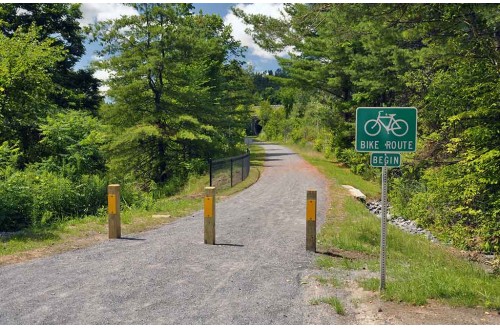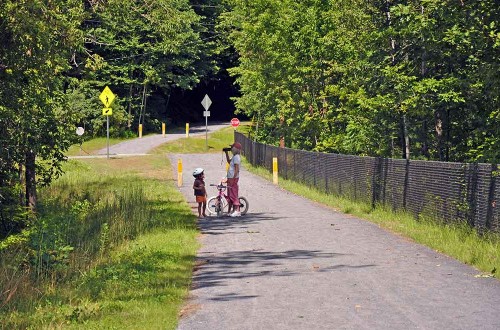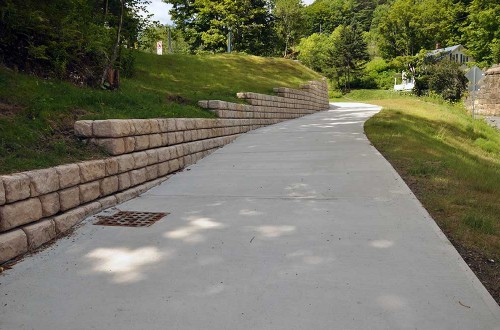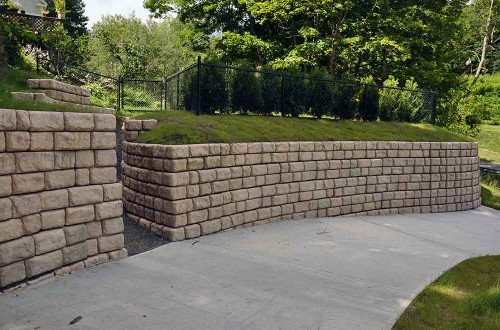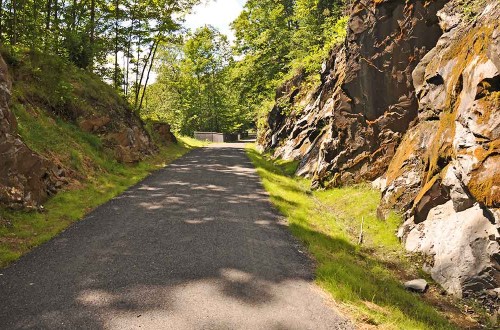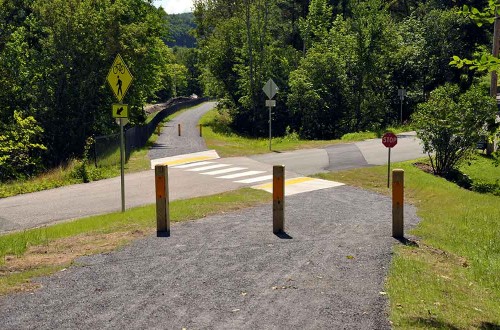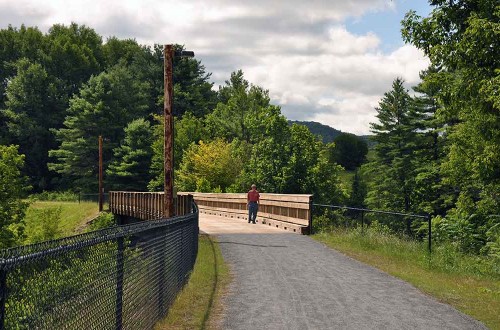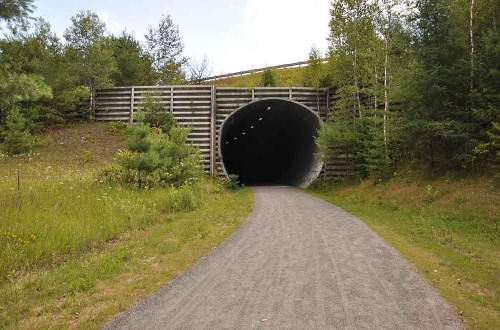Three Rivers Transportation Pathway
St. Johnsbury, Vermont
Engineering and construction phase services for a new 1.1 mile shared use transportation path connecting Western Avenue with a new trailhead at South Main Street. The path is 10-ft-wide with 2-ft-wide graded shoulders and includes: several roadway crossings; redecking of a 160-ft-long former railroad bridge over the Sleepers River; design of special planking for a former 250-ft-long railroad tunnel for snowmobile, bicycle, and pedestrian use; landscaping and use of retaining walls to address property owner concerns; sections of sidewalk for pedestrians; and a “share the road” section for bicyclists. Design included a new trailhead parking lot and lighting in the tunnel and at the bridge over the Sleepers River.
Services included alternatives analyses, design, right-of-way, environmental documentation, utility coordination, contract document preparation, and assistance during construction. Preliminary Plans were prepared by others and had been approved when D&K was assigned the project. D&K modified the path alignment and design to eliminate a rail crossing and to minimize wetland, stream buffer, cultural resource, and property impacts. The project required extensive coordination with adjacent residential and commercial property owners. Project included extensive coordination with the VTrans Rail Section. D&K also met with the Vermont Railway and conducted a diagnostic meeting to discuss crossing of their active line.
Project issues included working with the VTrans Rail Section for property boundary establishment and leasing of the Lamoille Valley rail corridor; conversion of the former rail bridge and tunnel to shared use path facilities; extensive property owner coordination, negotiation, and mitigation measures to address concerns; and coordination with Vermont Association of Snow Travelers (VAST) for future extension of this path to become part of the Lamoille Valley Rail Trail. The project was administered through VTrans Local Transportation Facilities (LTF) Section and followed the LTF Guidebook for Municipally Managed Projects.

